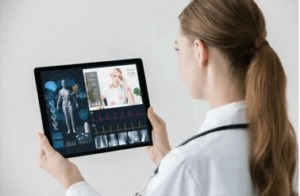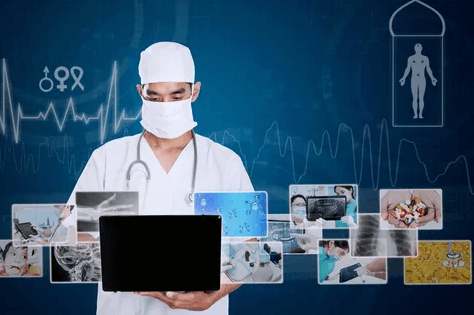The Role of Technology in Modern Healthcare Billing
Introduction
In the contemporary healthcare landscape, the significance of technology in healthcare billing cannot be overstated. With the rapid advancements in digital tools and systems, technology is pivotal in transforming traditional billing practices into streamlined, accurate, and patient-centric processes. The intricate nature of healthcare billing demands precision, transparency, and efficiency, which modern technology offers through automation, electronic health record integration, and artificial intelligence. Amid evolving healthcare delivery models and increasing data security concerns, harnessing technology’s potential ensures timely and error-free billing while empowering patients to engage more actively in their financial transactions. This exploration of technology’s role in healthcare billing reveals its vital importance in enhancing healthcare administration.
healthcare landscape, the significance of technology in healthcare billing cannot be overstated. With the rapid advancements in digital tools and systems, technology is pivotal in transforming traditional billing practices into streamlined, accurate, and patient-centric processes. The intricate nature of healthcare billing demands precision, transparency, and efficiency, which modern technology offers through automation, electronic health record integration, and artificial intelligence. Amid evolving healthcare delivery models and increasing data security concerns, harnessing technology’s potential ensures timely and error-free billing while empowering patients to engage more actively in their financial transactions. This exploration of technology’s role in healthcare billing reveals its vital importance in enhancing healthcare administration.
This blog will explore numerous valuable insights and tools to effectively enhance your knowledge and experience. Let’s take each of them into consideration individually.
Automation and Efficiency
In the realm of modern healthcare, the integration of technology has revolutionized the way billing processes are conducted. Let’s take each of them into consideration individually. Automation, a cornerstone of technological advancement, has emerged as a transformative force in healthcare billing, offering unprecedented efficiency and accuracy. By replacing manual tasks with automated workflows, healthcare providers can drastically reduce human errors, minimize administrative overhead, and expedite the billing cycle.
Through electronic health record (EHR) integration, disparate systems seamlessly communicate, allowing real-time data exchange between medical procedures and billing codes. This enhances accuracy and ensures transparency in billing practices, fostering trust between healthcare institutions and patients.
Furthermore, automation optimizes revenue cycle management by tracking claims, monitoring reimbursement patterns, and identifying potential discrepancies. This proactive approach enables healthcare providers to address issues promptly and improve financial outcomes.
Electronic Health Records (EHR) Integration
EHR integration elevates billing accuracy by seamlessly linking medical data, minimizing errors, and fostering transparent billing practices, thus improving patient-provider trust. Let’s discuss important issues regarding this.
Seamless Data Exchange: EHR integration revolutionizes healthcare billing by facilitating the seamless exchange of patient information between medical and billing systems. This direct link mitigates errors from manual data entry, ensuring that the billed services accurately reflect the provided.
Real-time Documentation: With EHR integration, healthcare providers can document patient encounters in real-time, capturing treatment details, medications administered, and procedures performed. This documentation improves billing accuracy and transparency by providing a comprehensive service record.
Automated Coding and Billing: Integrated EHR systems can automatically generate billing codes based on documented treatments and procedures. This automated process reduces coding errors and ensures that claims are accurately submitted, minimizing denials and rejections.
Consistent Patient Information: EHR integration maintains a consistent patient database, eliminating the need for redundant data entry across various systems. This coherence in patient information enhances billing accuracy by preventing discrepancies and ensuring that all charges correspond to the correct patient.
Enhanced Patient Engagement: EHR-integrated billing processes enable patients to access their medical records and billing details through secure online portals. This transparency empowers patients to review services rendered, charges billed, and insurance coverage, fostering trust and collaboration between patients and healthcare providers.
Telehealth and Remote Billing
The advent of telehealth has redefined healthcare delivery, prompting a need for innovative billing solutions. Technology has seamlessly integrated remote patient care with billing processes, allowing healthcare providers to offer consultations, diagnoses, and treatment plans remotely. This shift has necessitated the development of remote billing systems that cater to virtual encounters, ensuring accurate reimbursement for telehealth services.
redefined healthcare delivery, prompting a need for innovative billing solutions. Technology has seamlessly integrated remote patient care with billing processes, allowing healthcare providers to offer consultations, diagnoses, and treatment plans remotely. This shift has necessitated the development of remote billing systems that cater to virtual encounters, ensuring accurate reimbursement for telehealth services.
Remote billing leverages secure digital platforms to capture patient information, billable services, and insurance details, fostering efficient claim submission. It adapts to the evolving telehealth landscape and maintains billing accuracy while accommodating different reimbursement models associated with remote care.
Furthermore, integrating remote billing technologies ensures compliance with regulatory guidelines and reimbursement codes specific to telehealth. As healthcare continues to embrace virtual care delivery, the role of technology in enabling seamless and accurate remote billing remains a critical aspect of modern healthcare administration.
Data Security and Compliance
As technology reshapes healthcare billing, ensuring patient data security and compliance becomes paramount. With the digitization of sensitive billing information, healthcare organizations must navigate complex privacy regulations like HIPAA to safeguard patient confidentiality. Robust encryption, access controls, and regular audits are crucial to mitigating data breaches. Compliance with evolving standards demands continuous monitoring and adaptation of billing systems, fostering trust by demonstrating a commitment to patient privacy. Balancing technological innovation with stringent data security measures is essential to navigate the intricate landscape of patient privacy in modern healthcare billing.
Artificial Intelligence in Revenue Cycle Management
Artificial Intelligence (AI) in modern healthcare billing by harnessing data-driven insights. AI’s proficiency lies in its ability to analyze extensive datasets, leading to precise billing and revenue enhancement. Its predictive capabilities identify potential claim denials through historical data analysis, reducing errors and expediting reimbursement. Moreover, AI streamlines operations through task automation, mitigating human errors and enabling staff to focus on intricate cases. By optimizing revenue and reducing errors, AI transforms revenue cycle management into a more efficient and effective process, advancing healthcare financial systems to new heights.
Patient-Centric Billing Portals
Empowering patients through billing portals enhances healthcare financial management, promoting transparency and personalized control over medical expenses.
Personalized Financial Insights: Patient-centric billing portals provide individuals with detailed breakdowns of medical expenses, empowering them to understand and manage their healthcare costs effectively.
Convenient Payment Options: These portals offer diverse payment methods, allowing patients to choose the most suitable option and schedule, enhancing convenience, and reducing barriers to timely payments.
Transparency and Engagement: Patient-centric portals foster transparency by displaying billing details, enabling patients to address discrepancies promptly. This engagement strengthens the patient-provider relationship and encourages active involvement in the financial aspects of care.
Concluding Remarks
Technology’s pivotal role in billing processes is indispensable in contemporary healthcare. With automation, EHR integration, AI, and patient-centric portals, technology enhances accuracy, efficiency, and patient engagement. It navigates complexities, improves revenue cycle management, and ensures data security. As healthcare evolves, embracing technology is paramount, as it not only streamlines administrative tasks but also transforms billing into a transparent, accurate, and patient-centered system, ultimately advancing the overall quality of care and financial management in modern healthcare.








